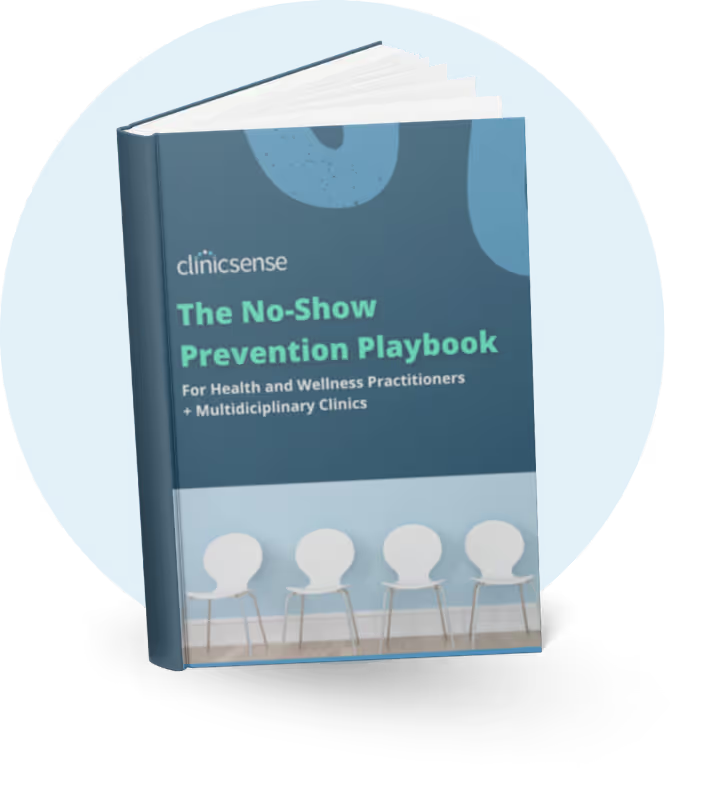Osteopathy Business Tips
February 18, 2025

Choosing the right osteopathic medicine career path can feel overwhelming, but understanding your options can help you find the perfect fit. This guide explores what DOs do, workplace opportunities, continuing education options, and how to start your own practice, offering insight to help you shape your future as an osteopathic physician.
An osteopath, or Doctor of Osteopathic Medicine (DO), focuses on holistic approaches to healthcare, treating the whole person rather than just symptoms. They diagnose, prevent, and treat illnesses, often incorporating osteopathic treatmenttechniques to improve mobility, alleviate pain, and support the body's natural healing processes.
With a degree in osteopathic medicine, you can become a licensed physician specializing in areas like primary care, pediatrics, surgery, or sports medicine. DOs work in hospitals, private practices, academic settings, or research, often focusing on holistic, patient-centered care. Many also choose to start their own practices.
Primary care is the most common specialty for DOs, focusing on holistic, patient-centered care for individuals and families. DOs in this field build lasting relationships, manage chronic conditions, and emphasize preventive care. It’s a great fit for those who value broad, long-term impact and fostering connections with diverse patient populations.
Pediatricians care for infants, children, and adolescents, addressing physical, emotional, and developmental health. DOs in pediatrics focus on holistic care and prevention, often using their training to ease common childhood ailments. This specialty suits those who enjoy working with kids and making a lasting impact on their health and well-being.
Internal medicine involves diagnosing and managing complex conditions in adults, from chronic illnesses to acute health issues. DOs in this field often work in hospitals or outpatient settings, focusing on comprehensive care. This specialty is a great fit for those who enjoy tackling medical challenges and providing long-term patient support.
Emergency medicine allows DOs to provide immediate, life-saving care for patients with acute injuries or illnesses. Their holistic training helps them address underlying issues while treating symptoms quickly. This fast-paced specialtyis ideal for those who thrive under pressure, enjoy variety, and want to make a difference in critical situations.

Obstetrics and gynecology (OB/GYN) focuses on women’s reproductive health, pregnancy, and childbirth. DOs bring a whole-person approach to care, supporting patients through critical life stages. This specialty is perfect for those passionate about women’s health, building trust, and balancing both medical and surgical aspects of care.
General surgery involves performing a wide range of surgical procedures to treat injuries and illnesses. DOs in this field use their osteopathic training to consider the body's interconnected systems during treatment and recovery. This specialty suits those who excel in precision, problem-solving, and making immediate, impactful changes in patients'lives.
Anesthesiology focuses on pain management and administering anesthesia during surgeries and procedures. DOs excel in this specialty by using their understanding of the body's systems to optimize patient safety and comfort. This field is ideal for those who enjoy teamwork, precision, and playing a vital role in surgical care.
Dermatology focuses on diagnosing and treating skin, hair, and nail conditions, from acne to complex skin disorders. DOs bring a patient-centered approach to managing both cosmetic and medical concerns. This specialty is a great fit for those who enjoy detail-oriented work, long-term patient care, and improving confidence through skin health.
Neurology specializes in diagnosing and treating disorders of the brain, spinal cord, and nervous system, such as migraines, epilepsy, and Parkinson’s disease. DOs in neurology focus on understanding the whole person and the interconnected systems affecting neurological health. This field suits those fascinated by the complexities of the human brain.
Neuromusculoskeletal medicine focuses on diagnosing and treating conditions involving the muscles, bones, and nerves. DOs in this specialty use osteopathic manipulative medicine (OMM) to alleviate pain and restore function. This field is ideal for those passionate about hands-on care and helping patients improve mobility and overall quality of life.
Orthopedics focuses on diagnosing and treating conditions affecting the musculoskeletal system, including bones, joints, and ligaments. DOs in this specialty often incorporate their training in structural alignment to enhance recovery. It’s an excellent fit for those who enjoy solving mechanical problems, performing surgeries, and helping patients regain mobility and function.
Sports medicine and rehabilitation focus on preventing, diagnosing, and treating injuries related to physical activity. DOs excel in this field by combining osteopathic principles with evidence-based practices to optimize recovery and performance. This specialty is ideal for those passionate about helping athletes and active individuals return to peak condition safely.
Proctology, a subspecialty of colorectal surgery, focuses on diagnosing and treating conditions of the rectum, anus, and colon, such as hemorrhoids, colorectal cancer, and inflammatory bowel disease. DOs in this field bring a compassionate approach to sensitive issues. It’s a good fit for detail-oriented individuals who want to improve patients’ quality of life.
Radiology involves using imaging techniques like X-rays, MRIs, and CT scans to diagnose and monitor diseases and injuries. DOs in radiology apply their comprehensive medical training to interpret images and guide treatments. This specialty is ideal for those who enjoy technology, problem-solving, and contributing to accurate diagnoses behind the scenes.
Medical researchers with a DO degree focus on advancing healthcare through clinical studies, drug development, and innovative treatments. Their holistic training provides a unique perspective on patient-centered research. This path is perfect for those passionate about discovery, improving medical knowledge, and shaping the future of osteopathic medicine and patient care.
Osteopathic doctors can work in diverse settings, including hospitals, private practices, clinics, academic institutions, and research facilities. They also serve in specialized environments like sports teams, military healthcare, and public health organizations. This versatility allows DOs to tailor their careers to their interests and preferred practice style.
.avif)
Private practice offers autonomy and flexibility, allowing a doctor of osteopathic medicine to tailor their services and patient care. DOs can build lasting relationships and focus on holistic approaches. This setting is ideal for those who value independence, entrepreneurship, and creating a personalized osteopathic medicine career aligned with their values.
Medical clinics provide a collaborative environment where osteopathic physicians work alongside other healthcare professionals to deliver patient-centered care. DOs in this setting often focus on holistic approaches and treat diverse conditions. Clinics are a great fit for those who enjoy teamwork, steady patient flow, and a structured osteopathic medicine career.
Hospitals offer a fast-paced environment where DOs practice a wide range of specialties, from emergency medicine to surgery. Working in a hospital provides access to advanced technology, diverse cases, and opportunities for collaboration. This setting suits those who thrive in dynamic environments and enjoy tackling complex medical challenges.
Laboratories provide opportunities for DOs to focus on research, diagnostics, and advancing medical science. This workplace allows osteopathic physicians to contribute to breakthroughs in treatments and technologies. Ideal for those with a passion for discovery, precision, and a behind-the-scenes role in shaping the future of healthcare.
Universities offer DOs opportunities to teach, conduct research, and mentor future osteopathic physicians. This setting combines education with advancing medical knowledge, allowing DOs to shape the next generation of doctors. It’s a great fit for those who enjoy academia, lifelong learning, and contributing to the growth of osteopathic medicine.
Health departments allow DOs to focus on public health initiatives, disease prevention, and community wellness programs. This role emphasizes improving population health through education, policy, and outreach. It’s ideal for those passionate about making a broad societal impact and addressing healthcare challenges on a community or regional scale.
Hospital administration enables DOs to take leadership roles, managing healthcare operations, improving patient care systems, and shaping organizational policies. This career path is perfect for those who enjoy strategic planning, problem-solving, and influencing healthcare delivery on a larger scale while leveraging their medical expertise.
Physical therapy clinics provide DOs with the opportunity to collaborate on rehabilitation and pain management for patients recovering from injuries or surgeries. Their training in musculoskeletal health complements therapy plans. This setting is ideal for those passionate about hands-on care and helping patients regain mobility and improve quality of life.
Continuing education is essential for osteopathic physicians to stay current, maintain certifications, and refine their skills. From hands-on training to online courses, organizations like the American Osteopathic Association, American Academy of Osteopathy, and OMM Education Series offer resources to help DOs grow and excel in their osteopathic medicine career.
The American Osteopathic Association (AOA) offers comprehensive continuing medical education (CME) resources for osteopathic physicians. Through live events, online courses, and specialty-specific programs, DOs can maintain their certifications and enhance their skills. This platform is ideal for DOs seeking accessible, high-quality education tailored to their osteopathic medicine career.
The American Academy of Osteopathy (AAO) specializes in continuing education focused on osteopathic manipulative medicine (OMM). Their live CME events offer hands-on training and advanced techniques for DOs. This is an excellent resource for those passionate about refining their OMM skills and deepening their holistic approach to patient care.
The OMM Education Series provides online and in-person courses designed to enhance osteopathic manipulative medicine skills. With a focus on practical application and evidence-based techniques, it’s a valuable resource for DOs seeking flexible, specialized training to advance their expertise in OMM and improve outcomes in their osteopathic medicine career.
Starting an osteopathy business involves obtaining proper licensing, securing a location, and building a patient base. You’ll also need to develop a business plan, market your services, and invest in tools like practice management software to streamline operations and provide excellent patient care.
Optimize Your Practice With the Right ToolsIf you’re running your own osteopathic practice, having reliable osteopathy software is essential for managing appointments, billing, and SOAP notes. Tools like ClinicSense offer features to simplify operations and improve efficiency. You can even explore their SOAP notes free trial to see how it supports your workflow and patient care.


.avif)
.avif)
.avif)









For 14 days